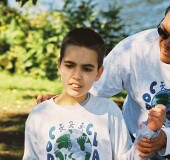
MONDAY, Jan. 11 (HealthDay News) — A new study adds to growing evidence that autism is caused by a miswiring of connections in a child’s developing brain, resulting in impaired information flow.
According to researchers at Children’s Hospital Boston, it may be possible to one day treat the problem with drugs that target the molecular pathways that cause the miswiring.
The study authors looked at a rare disorder called tuberous sclerosis complex (TSC), which causes benign tumors throughout the body, including the brain. Many people with TSC have epilepsy and intellectual disabilities, and about 25 percent to 50 percent of TSC patients have autism spectrum disorders.
In this study, the researchers found that mutations in one of TSC’s causative genes (TSC2) prevent growing nerve fibers (axons) from locating their proper targets in the developing brain.
The team focused on a nerve fiber (axon) route between the eye’s retina and the visual processing area of the brain in mice. When neurons were deficient in TSC2, their axons failed to end up in the correct locations. That’s because the axons’ tips, called growth cones, didn’t respond to navigation cues from molecules called ephrins.
“Normally, ephrins cause growth cones to collapse in neurons, but in tuberous sclerosis the axons don’t heed these repulsive cues, so keep growing,” senior investigator Dr. Mustafa Sahin, of the hospital’s neurology department, said in a news release.
This loss of axon responsiveness to ephrin signals is caused by activation of a molecular pathway called mTOR. The activity of this pathway increases when neurons are deficient in TSC2, the researchers noted.
This study examined retinal connections to the brain, but Sahin and colleagues said their findings may help improve general understanding of the organization of the developing brain. In autism, it’s believed that abnormal wiring may occur in areas of the brain involved in social cognition.
“People have started to look at autism as a developmental disconnection syndrome — there are either too many connections or too few connections between different parts of the brain,” Sahin said in the hospital news release. “In the mouse models, we’re seeing an exuberance of connections, consistent with the idea that autism may involve a sensory overload, and/or a lack of filtering of information.”
The study was published online Jan. 10 in the journal Nature Neuroscience.
More information
The U.S. National Institute of Neurological Disorders and Stroke has more about autism.

